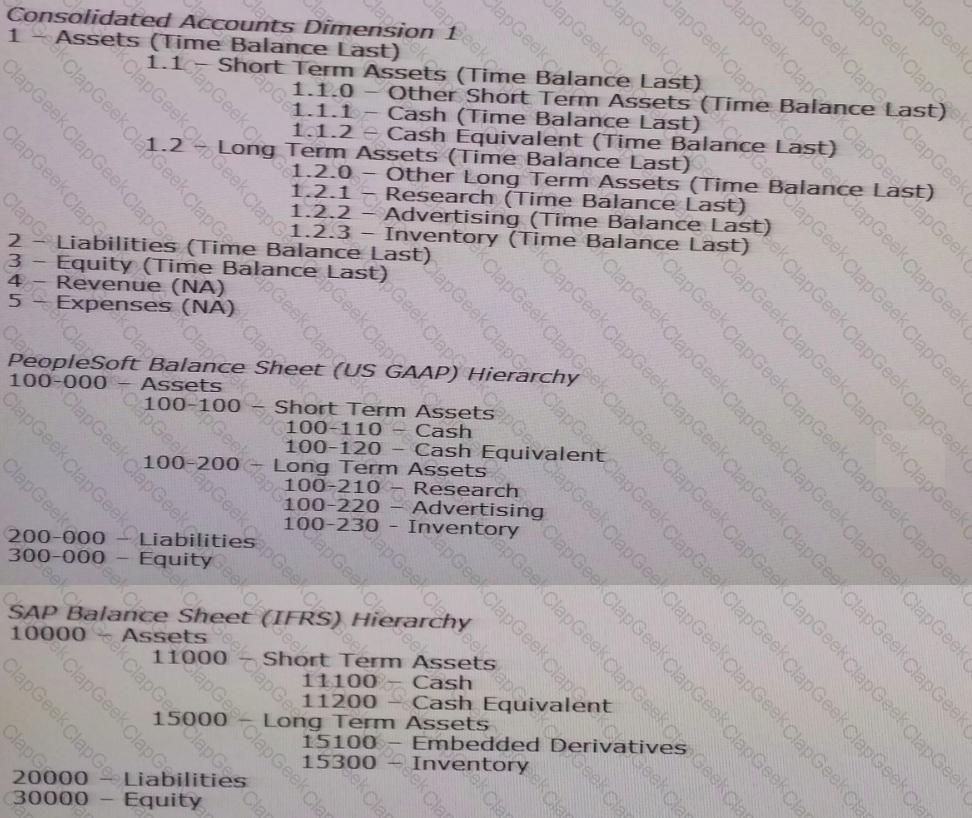Identify the three true statements about the Initial Data Load process when you first implement DRM.
What two DRM features allow you to group hierarchies used for data mappings for easier selection and browsing?
Per the example:

Your organization has two ERPs: PeopleSoft (PS) and SAP. Each ERP has its own chart of accounts. Each chart of accounts is mapped to a consolidated chart of accounts. The Finance department maintains the consolidated account hierarchy.
Identify the steps in the correct order to manage the mapping of the local chart of accounts in the consolidated chart of accounts structure using DRM hierarchies.
1. Build the consolidated chart of accounts hierarchy.
2. Build the PeopleSoft and SAP chart of accounts hierarchies.
3. Create a property category called CoA Map with two property definitions: PS CoA Mapping and SAP CoA Mapping.
4. Create an alternate Market hierarchy with limb nodes "large", "Medium", and "Small". Insert cities as leaf nodes under the appropriate Market Size nodes.
5. Use the Blend function to merge the PeopleSoft and sap chart of accounts to the correct consolidated account node In the consolidated hierarchy.
6. Drag and drop the PeopleSoft and SAP chart of accounts to the correct consolidated account in the consolidated hierarchy.
Identify the three benefits of adding a standard prefix to a related set of property definitions.
Identify three ways to narrow the scope of the first phase of the DRM implementation.
Your operations group is in the middle of a large re-organization of the Entity dimension. You create versions at the end of each closed month on the fifth work day. Business users have access to update the Entity hierarchy within the working version to add new cost centers and move cost centers beginning on the seventh business day. Your CFO is reguesting the complete chart of accounts hierarchy as of the 15th day of the month.
How can you deliver the CFO's request assuming the "AllowAsOf system preference has been set to True?


